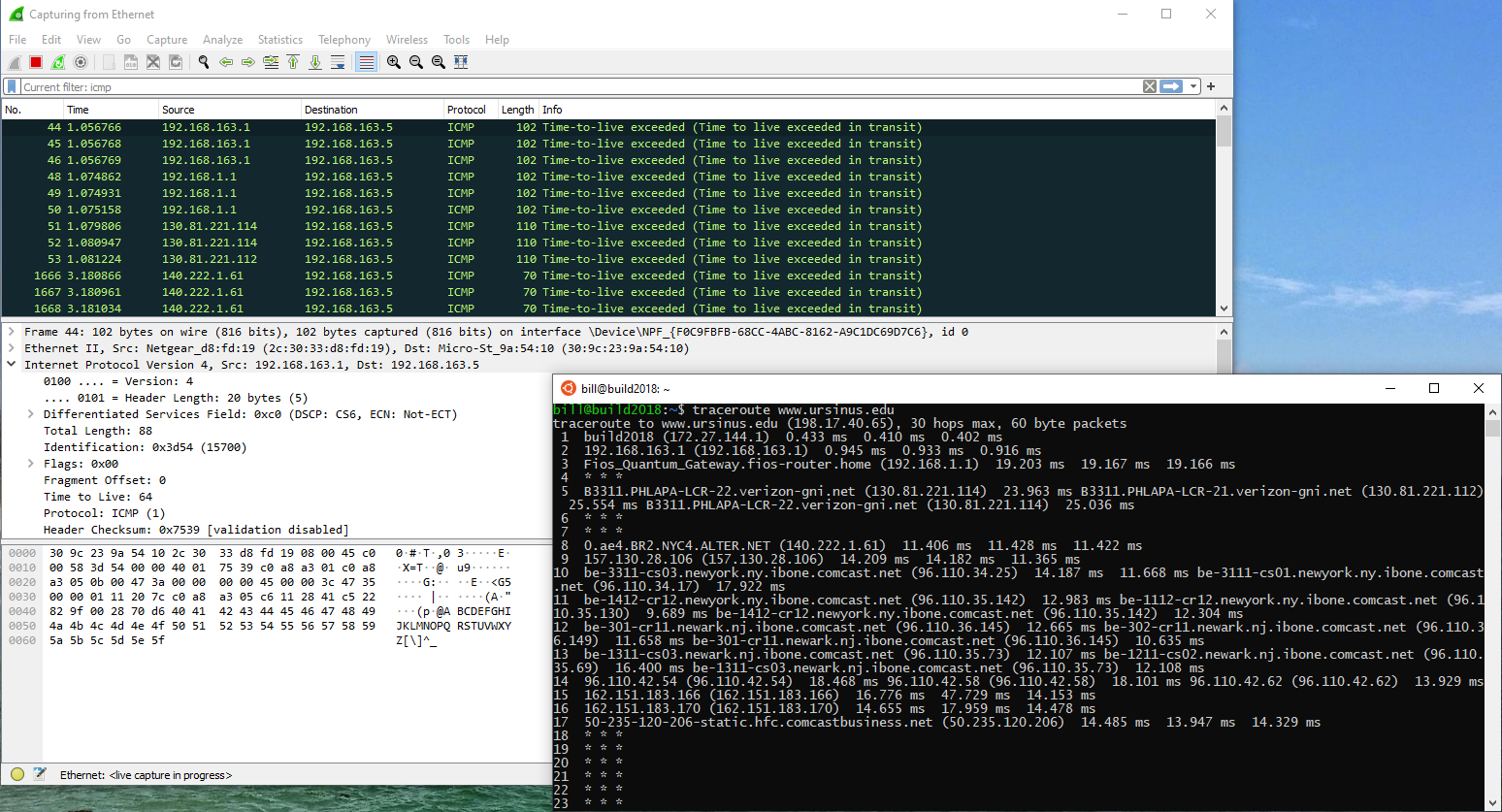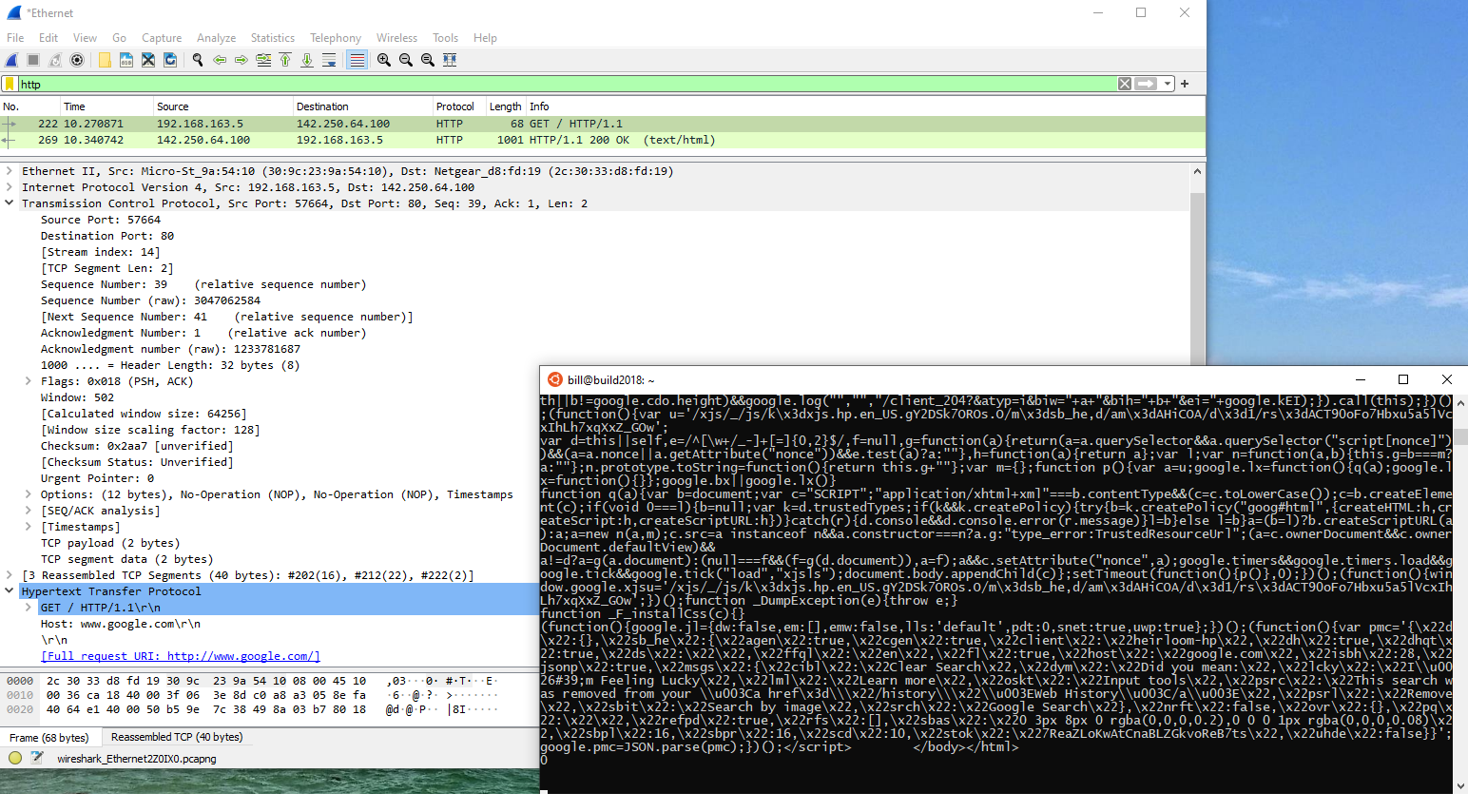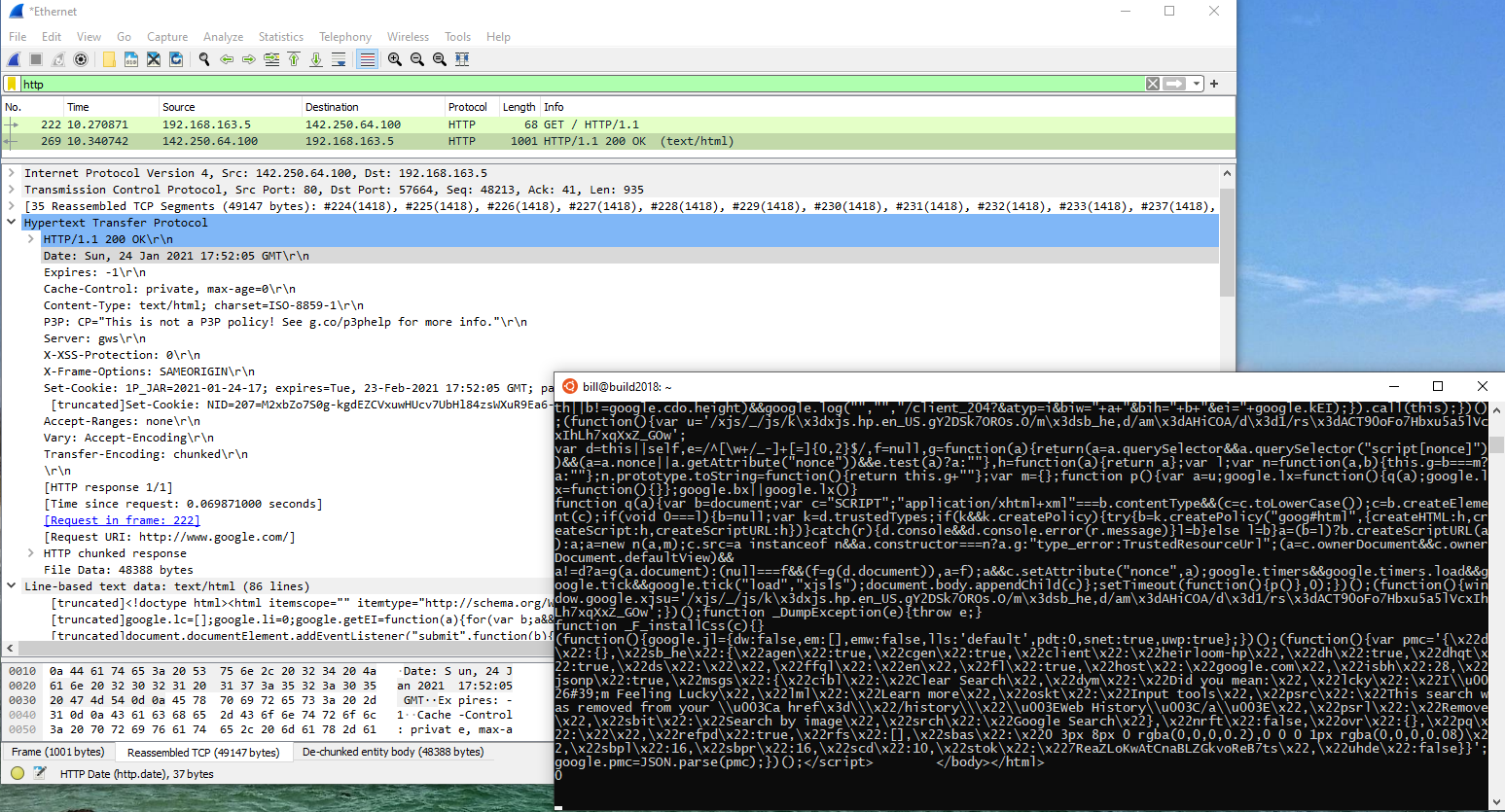CS475: Computer Networks - Motivating Examples
Activity Goals
The goals of this activity are:
- To explore network tools and protocols including nslookup, HTTP, and traceroute
- To motivate the need for loosely interconnected networking protocols to provide different but compatible levels of service
The Activity
Directions
Consider the activity models and answer the questions provided. First reflect on these questions on your own briefly, before discussing and comparing your thoughts with your group. Appoint one member of your group to discuss your findings with the class, and the rest of the group should help that member prepare their response. Answer each question individually from the activity on the Class Activity Questions discussion board. After class, think about the questions in the reflective prompt and respond to those individually in your notebook. Report out on areas of disagreement or items for which you and your group identified alternative approaches. Write down and report out questions you encountered along the way for group discussion.
Model 1: Control Messages with ICMP and ping
Questions
- What do you think Time-to-Live means?
- The Wireshark trace returns results from each network node on the path to the destination, but the resposne message appears to be an error. What do you think the Time-to-Live has to do with finding each hop on the path?
- Generally, the round-trip-time increases as the length of the path increases, but not strictly so. Why do you think this is?
Model 2: IP Address Resolution with the DNS Protocol
Questions
- What port number is used to make the DNS request?
- What domain did I search for, and what answer(s) were returned?
- Where in the Wireshark trace are the returned addresses found?
- Why do you think more than one answer was returned for this request?
Model 3: The HTTP Application-Layer Protocol
Questions
- What text is contained in the HTTP request?
- What kind of data formatting do you see in the request? Do you see this format replicated in the response, and if so, what kinds of information are returned aside from the webpage itself?
- What would happen if an image or other media was encountered in the HTTP response?
- The command I used to connect to the web server was
telnet www.google.com 80. Similarly, you typically enter http://www.google.com into a web browser. Why was it unnecessary to run a DNS lookup and enter the IP address here instead?
Submission
Submit your answers to the questions using the Class Activity Questions discussion board. You may also respond to questions or comments made by others, or ask follow-up questions there. Answer any reflective prompt questions in the Reflective Journal section of your OneNote Classroom personal section.



